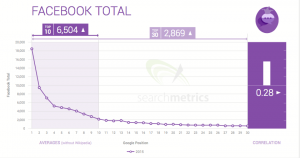3 Factors of High-Performing Content – AdLift

When you start thinking about your overall digital marketing strategy, one of the key components to nail down is your content production. At this point, it’s been well established that not all forms of content are created equally. While some pieces go viral, others fail to garner any significant traction.
Because content creation is a time and resource intensive exercise, it’s not worth investing in content that’s not going to take off. Your content should provide reasonable ROI for your business, through better brand recognition and social presence, and an increase in your conversion rates.
Obviously, everything that you write is not going to be reposted around the web overnight, but there are certain qualities that have been shown to resonate with readers and with Google. By keeping those elements in mind as you craft new content, you put yourself on the right track for a more successful campaign and larger digital strategy.
So how exactly do you determine what’s going to be a high-quality content piece? We’ve gathered some of the elements that play into a successful content marketing strategy below:
1. Topic and Tone
When it comes to formulating your content strategy, you need to consider the topics that are going to resonate more powerfully with your readers and your target audiences. Naturally, those are going to be industry insights about your business and any related information that could be valuable to potential customers.
For B2B businesses, you’re going to want to write content with the decision maker in mind. For example, companies in the tech space should consider writing to a CTO audience, one that doesn’t need the same high level summarization that would be better suited for a consumer facing product.
In terms of topical relevance, by honing your focus to a narrow field, you’ll build a following of relevant readers that are more likely to convert on your site. This also decreases your dependence on older SEO practices like keyword stuffing that are no longer effective. Your target keywords will appear in the content more naturally, and you’ll have content that people enjoy reading.
2. Popular Types of Content
Aside from the topic and tone of your content, the format and structure that you use to organize that information play a huge role in its shareability. Internet readers are inevitable fickle, and you’re only going to hold their attention and interest so long as you provide them something of value, whether that’s entertainment, new information, or advice on topics they can use.
As such, these tend to be some of the most popular and more shared content forms on the web. According to SocialMediaToday, the numbers support it:
Entertainment Value:
Whether we like to admit it or not, much of our time on the web is spent consuming entertainment materials; watching hours of Netflix and reading BuzzFeed posts. And as you could probably guess, those BuzzFeed-style posts are able to pull in quite a readership, the structure of which you can easily replicate in your content strategy.
Those image-heavy posts are easy to consume, and they regularly see 100,000 or more shares from pleased readers. When it comes to social sharing, Facebook posts with images receive twice as many shares as their image-free brethren.
So go ahead, spend some time with the graphics team to tell your story in a visually compelling manner. We guarantee it’ll be worth it when you see the increase in shares.
New Information:
This might come as a surprise, but quizzes are actually one of the most shared content formats for web content. While you might think quizzes aren’t the most suitable for your business, think again.
Branded quizzes are an excellent way to engage your readership and keep them motivated to read through to the end of your content with the incentive of a score or evaluation at the end of the quiz.
By setting up a simple quiz about their existing provider for whatever you hope to pitch to them, you can bring their attention to features of your competitors that they might be dissatisfied with, and highlight the areas of your business that are a compelling value prop.
Of the most shared articles in 2014, eight out of ten were in a quiz format, with an average rate of 1,900 shares per piece. When you see numbers that like, it’s hard to resist the call of the quiz.
Skills-Focused Advice:
Rounding out the trifecta of shareable content formats is the ever-popular How-To guide. You’re giving people a rundown of how they can proceed with basic functions of their jobs, improve their day-to-day lives, or generally learn about a process that was unfamiliar to them before.
It gives them valuable information, gets them interested in what you have to stay, and keeps them on the page longer, which eventually leads to a higher conversion rate.
The How-To article rakes in an astounding 5,200 shares on average, as people recognize the benefits of learning from content they find online. You’re giving them a free resource, and you’re fostering the beginnings of customer loyalty by doing so. It’s a smart way to package your content, and it should be one of the staples of your content creation plan.
3. How Google Evaluates Content Caliber
While you should always focus on the needs of your customers and readership when it comes to content creation, your content plays a significant role in your search rankings and how Google evaluates your website.
If you’re looking for new ways to increase your website’s ranking for particular keywords in your vertical, your content strategy can help. Check out some of the factors that Google takes into account to help determine those rankings below:
Long-Form, Streamlined Content
Looking into top 30 results pages, Searchmetrics recently found that the average text length of those pages has increased 25% in the past year. As the text got longer, the readability of that text has gotten simpler, as readers want valuable content that is clear and easy to ready.
Positive Social Signals
While there is some degree of debate about the influence of social network sharing on search rankings, it can’t hurt to promote your fresh content and add prominent social sharing buttons before or after your content on the page.
It might not determine causation, but there is a strong correlation between content that has seen a high number of social shares and content that ranks well on search engines. Solely looking at Facebook, webpages ranking first in search engine results have twice the number of shares as those ranking second. That’s a difference worth taking seriously.
User Friendly Experience
Examining top 30 results pages again, Searchmetrics found that a third of the sites were using responsive design to improve the user experience of their content. Because there is a such a marked increase in readership via smartphone or tablet, it’s becoming increasingly important to optimize your website design for mobile.
When your content loads quickly and readers can easily navigate the page, it can positively affect your rankings on Google because the ranking algorithm takes into account how long visitors stay on the page.
If people are quickly clicking the back button when an article is taking too long to load, that high bounce rate can adversely affects rankings and hurt traffic in the long run.
For more information about Content Marketing opportunities with AdLift, explore our site or give us a call at 1 (650) 409-1500! Let AdLift help you boost your digital footprint and reach a wider audience today!
Categories
Recent Posts
- How do I Verify My Business on Google to Ace Local SEO? March 17, 2025
- The Pros and Cons of Pay For Performance SEO March 17, 2025
- Website Structure for SEO: A Blueprint for Better Rankings March 17, 2025
- Is SEO for Subdomains Hurting your Rankings? Let’s Find Out! March 17, 2025
- Outsourcing SEO: A Cost-effective Solution for Startups to Scale Quickly March 17, 2025
- Keyword Cannibalization: Why It Matters for Your Company and How to Avoid It March 12, 2025
- The Role of SEO Projections in Budget Planning for CMOs March 11, 2025
- SEO for Bing: Unlocking Opportunities for Business Owners and Marketers March 11, 2025
- How to Maintain SEO and Rankings: Your SEO Maintenance Checklist March 7, 2025
- Must-have Enterprise SEO Tools to Boost your Online Presence March 7, 2025
Get
in Touch
Contact AdLift for a 360-degree marketing plan



